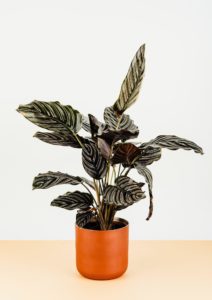Bronze is one of those metals that most people have heard of at least once. It’s very popular, much like gold and silver. Despite its popularity, bronze is quite elusive to most people, and that’s mainly because they don’t get to see objects made of bronze on a regular basis. In fact, bells of old churches and statues in museums are probably the only things that they can imagine when thinking of bronze. It turns out, there’s more to bronze than most people know. If you want to learn more about bronze—maybe you are thinking of using bronze tube, bar, or sheet for your own project—check out the interesting facts below.
It Isn’t Mined
All metallic elements are extracted from the earth through mining. Although bronze is undoubtedly metallic, it’s not an element. Rather, it’s a compound of two elements—copper and tin—which, unlike bronze, are mined. Those two elements are mixed together by smelting in a foundry to produce bronze. In other words, bronze is a manufactured metal. Sometimes, to improve the properties of bronze, a miniscule amount of other metals, such as aluminum, manganese, nickel or metalloids, such as arsenic, phosphorus or silicon, is added.
It Is Not Magnetic
One of the biggest misconceptions about metals is that all of them can be attracted to magnets. Bronze is one of those that cannot. So if you want to check whether or not a certain piece of furniture is genuine bronze, you can simply try to stick a magnet on its surface. If the magnet sticks, then it’s probably made of iron or nickel coated with bronze-colored paint. Many scrap yards do the same when segregating all the metals they can recycle.
It Doesn’t Rust
As an alloy of two metals that don’t rust, it’s pretty obvious that bronze doesn’t rust as well. But this doesn’t mean it doesn’t react to oxygen, which is the primary catalyst of rust. It does react but in a much different way from how iron and ferrous metals react. Instead of forming rust, it forms a patina on its surface. This is a layer of material that grows thicker over time, further improving bronze’s protection against the elements.
It’s Hard to Melt
If there’s one weakness you would want to improve in metals, it’s their low resistance to heat, thanks to their high conductivity. But some metals like bronze don’t heat up fast. Bronze’s melting point is about 950 °Celsius (1,742 °Fahrenheit), which makes it a great material for applications that involve extremely high temperatures. It also has a property that allows it to slowly expand while cooling down, which is helpful for sculpting.
It Can Be Welded
Those who are new to metalworking and are looking for the right metal to use in their projects are reluctant to opt for bronze. They keep asking, “Can bronze be welded?” Well, it can’t be welded using standard brazing techniques. Special brazing, which involves the use of dedicated filler bronze rods, is needed to connect bronze surfaces. The process is similar, though—melting the surface a bit to allow it to weld with another surface as it cools down.
There are many other facts about bronze that you should know before opting to use it for any of your projects. Knowing a thing or two about the metal you are planning to use could help in finding the right grade and amount. Copper alloy experts and bronze tubing suppliers like Rotax Metals can help you find the perfect materials, and they have a large inventory that can supply you with as much metals as you need.


